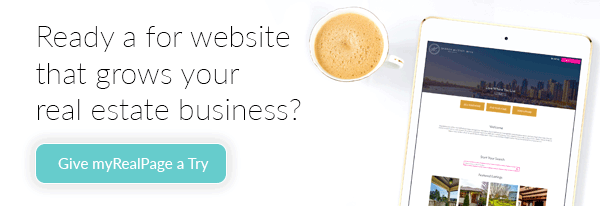How Real Estate Agents Can Get Their First 1,000 Subscribers On YouTube

It’s been a hot minute since we talked about YouTube on this blog.
Not because YouTube has gone to the social network graveyard. Far from it.
The internet’s favourite video platform has 1.9 billion users worldwide. A whopping 79% of internet users say they have a YouTube account. And 62% of businesses say they use it as a channel for their video content.
YouTube is also the internet’s second biggest search engine after Google.
Imagine not being found on Google when someone searches your real estate business? *Shudders*
Exactly. It’s time to treat YouTube the same way.
But it’s not enough just to be on YouTube. If you want to reap YouTube’s rewards — brand awareness, new leads, increased website traffic — you need to have an audience. You need viewers. You need subscribers.
Let’s get into it. Here are five steps for realtors to take to get their first 1,000 subscribers on YouTube.
1. Treat Your YouTube Channel Homepage Like Your Real Estate Website
Your YouTube channel homepage is like a mini version of your website.
It’s where other users can see your entire library of videos, check out stats about your account, and learn more about you.
You can add a banner and profile photo, and provide links to your website and social media accounts. You should be doing all of the above.
Banner. The design should use the same elements as your website (consistency is key to making your brand strong and recognizable), such as fonts and colours. It should feature a photo of you, along with your name, your business tagline (or a very short, catchy description of your business) and your website URL and phone number.
Profile photo. Make it a clear, crisp headshot (ideally the one you use on your website and business cards).
About. Use the About tab on your channel homepage to host a shorter, catchier version of the About Me page on your website. Don’t forget to include your contact information and links to your site and social media accounts in the fields provided.
2. Create a YouTube Content Plan
Decide what specific topics you want your YouTube account to focus on. We recommend choosing between four and eight.
 These are topics you should feel confident discussing and that provide real value to viewers. Things like local market updates for your area, neighbourhood guides, how-tos, buyer and seller tips and trend reports.
These are topics you should feel confident discussing and that provide real value to viewers. Things like local market updates for your area, neighbourhood guides, how-tos, buyer and seller tips and trend reports.
To help figure out the best topics to focus on, look at what kind of content is performing best on your blog, your Instagram and your Facebook.
Also do a little digging on YouTube to see what other real estate agents are publishing. Can you take a page from them, but make it better and localized to your neighbourhood? Is there a gap you can fill?
When you’ve decided on your topics, start coming up with specific ideas for each and plot them on a calendar. Be realistic about what you’ll be able to produce, but keep in mind that consistency will be key to building your audience.
Lastly, come up with a style guide for your videos. What will the “vibe” be? What music, backdrops and on-screen fonts will you use? Come up with parameters that feel true to your brand and that will enhance your content.
3. Use the Right YouTube Marketing Tools
No one expects you to be the world’s best video creator. You can’t do it all. But you can still achieve awesome quality videos, even as an amateur.
To make your videos high-quality, you need to focus on:
Lighting. No shadows, please, and always face the light.
Sound. It needs to be crisp, clear and full.
Background. Nothing too distracting. You should be in focus, not what’s behind you.
Editing. How your footage is edited can make all the difference. It should be well-paced (no areas that drag on and on, and no fast cuts that confuse viewers), logical and smooth.
Check out our guide to creating a home video studio for real estate agents for the low-down on how to nail all these elements in your do-it-yourself videos.
4. Write Strong Headlines and Descriptions
With so much content being added to YouTube every day, you need to employ some SEO strategy and copywriting skills to make sure that
- Your videos will be discovered
- Viewers will want to click on your videos
Your video headlines (or titles) need to be SEO-friendly and immediately engaging.
 Start by typing your video topic into YouTube’s search bar to see what popular related searches YouTube suggests.
Start by typing your video topic into YouTube’s search bar to see what popular related searches YouTube suggests.
Boom: immediate insight into how people are searching for content related to your topic.
For example, if your video is about the best home selling tips and YouTube’s search bar suggests “home selling tips 2019,” that’s probably a phrase you want to include in your video headline.
Your video descriptions are another opportunity to incorporate SEO. In a few lines, describe the content of your video using one or two keywords and phrases related to the one you used for your headline.
For example, if your headline was “My Best Toronto Home Selling Tips for 2020,” your description could be:
“My Best Toronto Home Selling Tips for 2020 >> Want to sell your Toronto house next year? Here’s what you need to know about the Toronto real estate market this year and how to make your house stand out, from a top Toronto real estate agent.”
But don’t end your description there! This field is a big opportunity to encourage viewers to hit the subscribe button, sign up for your real estate newsletter, register for a free consultation or head over to your Instagram account for behind the scenes of your biz.
Check out how Gary Wong Realty in Vancouver does it with their home staging video.
5. Promote Your YouTube Content All Over
 Despite your best efforts, you can’t just leave it up to YouTube users to discover your content. You have to spread the word yourself by…
Despite your best efforts, you can’t just leave it up to YouTube users to discover your content. You have to spread the word yourself by…
- Teasing videos on Instagram. Create a short “teaser” clip for your video to share on your real estate Instagram account. Pair it with a killer caption and tell your followers to tap the link in your bio to watch the full video on YouTube.
- Embedding videos in your blog posts. Whenever there’s a fit between your blog content and your video content, take advantage by embedding your YouTube video in the post.
- Link to them in your newsletter. Create a “Tips and Tricks” column in your newsletter where you can toss in your two cents on real estate topics with links to your blog posts and YouTube videos.
- Ask people to subscribe. Mention your account to clients, tell friends and family, and include subscribe calls-to-action when you promote your videos on social media. If you’re talking on camera during your video, ask viewers to hit the subscribe button – at least once or twice.
Do you follow any real estate or sales accounts on YouTube? Who are your favourites?


